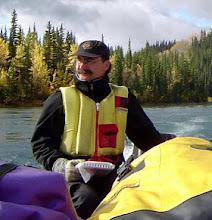Andrew, Joy and I, not the Magi, but also drawn by a (southern) star made a long journey to enjoy our family Christmas this year. Starting from just below the Arctic Circle we left a -30C Whitehorse early in the morning and, over the next 72 hours, crossed the Tropic of Cancer, the Equator, the International Date Line and the Tropic of Capricorn, thus pretty much covering off the whole of grade 8 geography. Air New Zealand, festooned with Hobbit land paraphenalia, claimed we'd arrived in Middle Earth where we stopped for snack before the final leg to Christchurch.
The whole point of the trip was to become acquainted with our first grandchild, Hector Mason. We found him with his Dad relaxing under a shady tree in the back garden. Erin and Stephen's world has contracted around a new centre and we were pleased to join them for a grand Christmas day.
We opened presents. Not surprisingly most were for Hector, though all of us got a treat or two. The sheer joy of having a multi-generation Christmas did not overshadow my own nostalgic reflections of Christmases where I've been the child, the adolescent, the adult and the parent. Now I'd crossed another line on a different kind of, and much longer, journey through life. What a delightful experience this has been. Life, especially new life, is wonderful stuff.
A New Zealand Christmas is usually at the beach. This year though our arrival in the middle of Christmas morning, and the coolness of the day - only +20C, meant we'd settle for a picnic in the backyard.
After our Christmas meal, it was time to play with Hector, again, and we all took turns practising jumps, flying and talking. His grins, and yawns, were infectious and we enjoyed a very mellow afternoon.
Then it was Hector's turn for a snack and a nap. And "after dinner the Uncles lay out in the sunshine, loosened all buttons, put their large moist hands over their watch chains, groaned a little and slept."
 |
| Zombie and Andrew do the Uncle thing. |


.jpg)


.jpg)

















e.jpg)
.jpg)
.jpg)
.jpg)

e.jpg)
.jpg)
.jpg)
.jpg)
.jpg)
e.JPG)
e.JPG)
e.JPG)
e.JPG)
e.JPG)

e.JPG)

e.jpg)



















